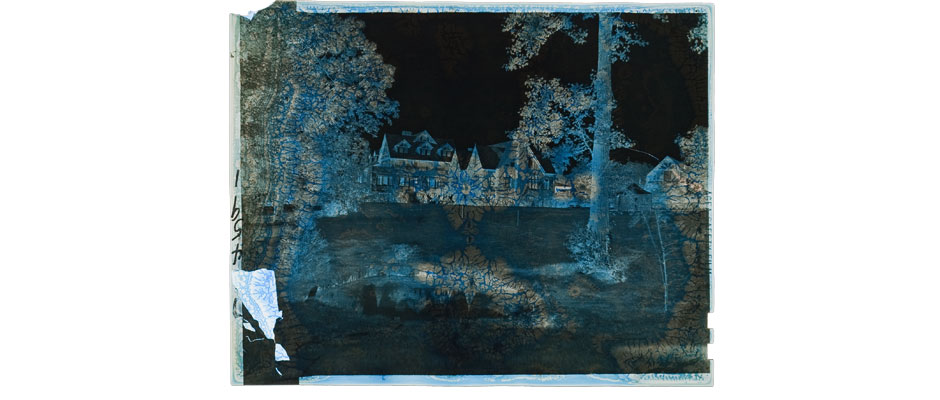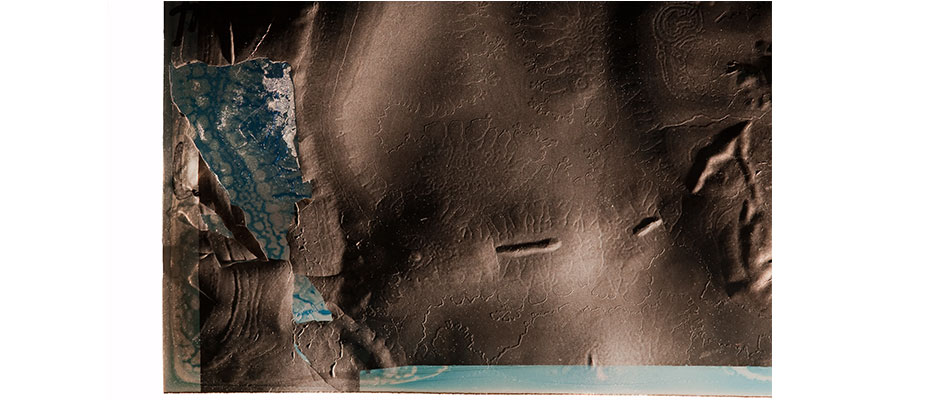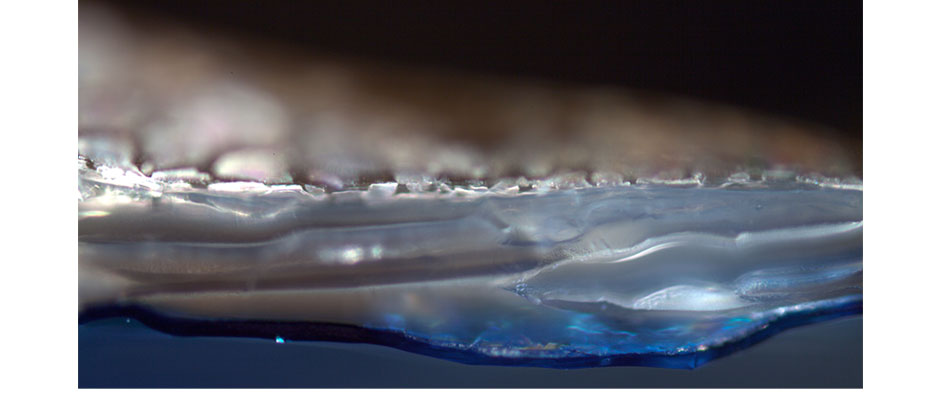


The blue dyes in the anti-halation backing layer of this negative have been retrieved as a consequence of acetate base decay. Blue-colored anti-halation dyes were used in some Agfa and Ansco sheet films; pink-colored dyes were used in some Kodak sheet films.

In this detail of the previous image, photographed in raking light, you can clearly see the flaking emulsion layer uppermost and the blue dyes present in the gelatin backing layer applied to the underside of the base.

This cross section detail shows the anti-halation backing layer with its blue-colored dye, the acetate plastic layer in the middle and the gelatin layer containing the image uppermost. The irregular distance between the layers is a result of delamination, caused by extreme shrinkage of the film base in relation to the gelatin.

(Left) This acetate 8x10 displays color retrieval and mold likely caused by water damage, which has accelerated the rate of acetate decay. The color retrieval is concentrated primarily at the edges of the film, but can also be seen in other parts of the image. (Right) Detail of image on the left showing the encroaching blue dye retrieved in the gelatin backing layer.
What it is and what causes itMany film negatives contain a backing layer designed to prevent halation artifacts and loss of resolution in the developed film. The anti-halation layer absorbs most of the light that would otherwise be reflected back up through the emulsion, scattering the light and reducing sharpness in the image. In sheet film, an anti-halation layer comprised of a dyed gelatin undercoat is common. Typically blue or pink dyes were used in the anti-halation layer and bleached on development of negatives, rendering the dye compounds invisible in developed negatives.When acetate film base decays, acetic acid is released. The presence of free acetic acid can trigger the retrieval of the color dyes in the backing layer, giving the film negative a blue or pink appearance. |
What you can doAnti-halation layer color retrieval is irreversible. The acetate decay that causes it can be delayed by storing film in a low temperature environment with controlled relative humidity. In cases of advanced acetate decay, films can be frozen, halting the progress of further decay until the film can be duplicated. |
At Risk
|